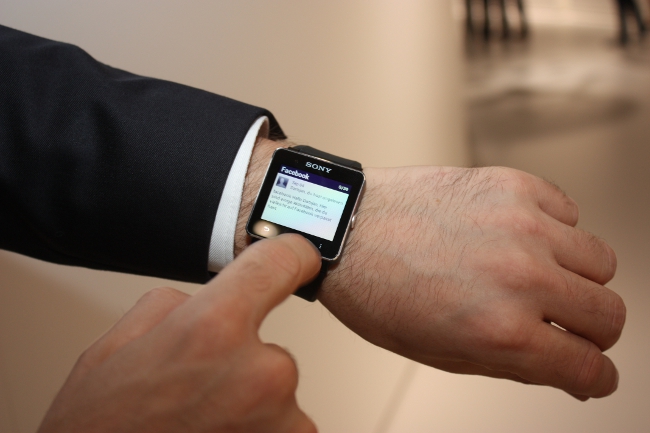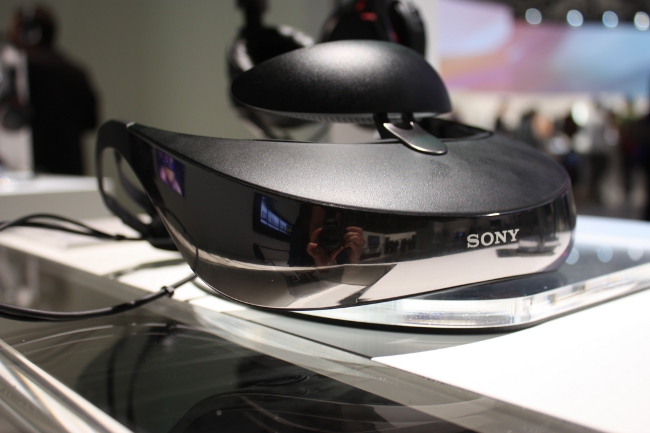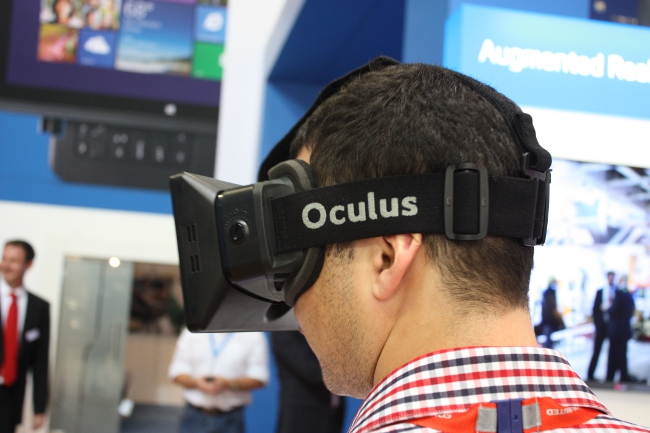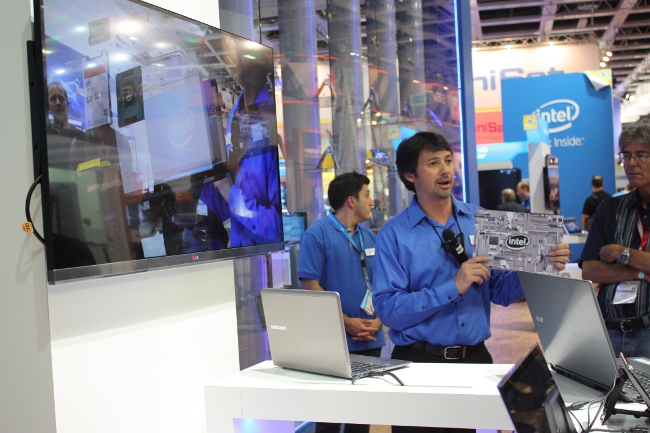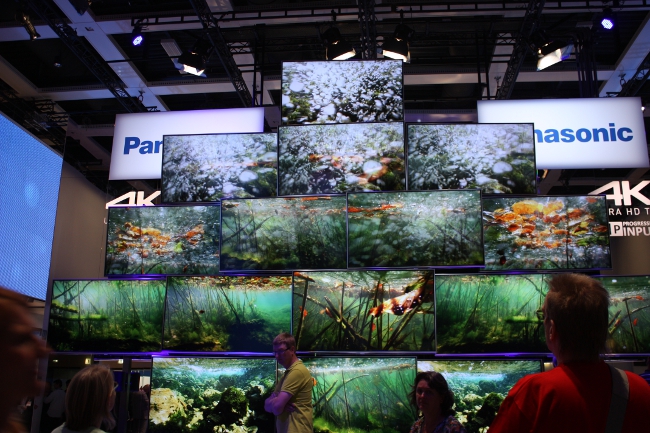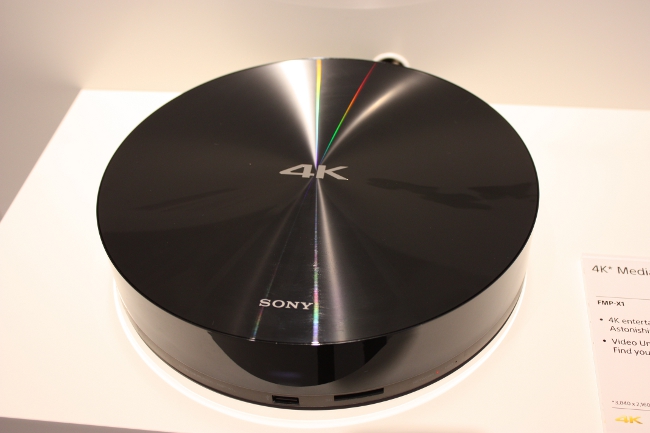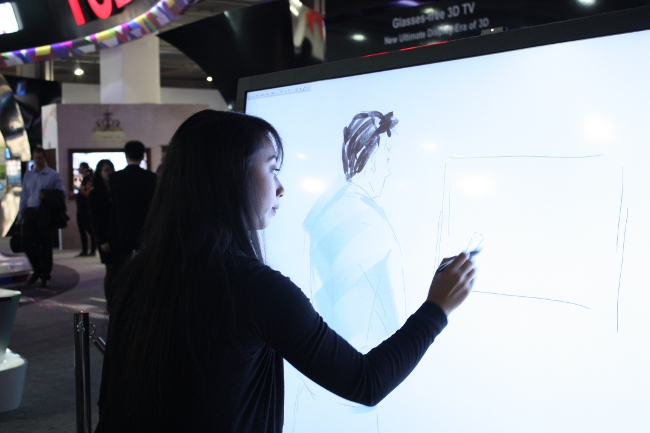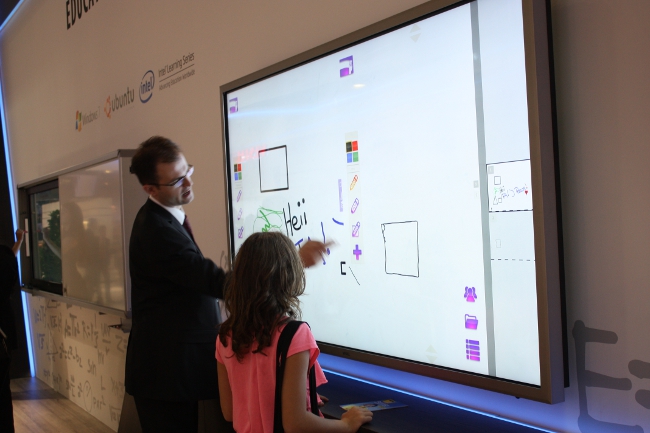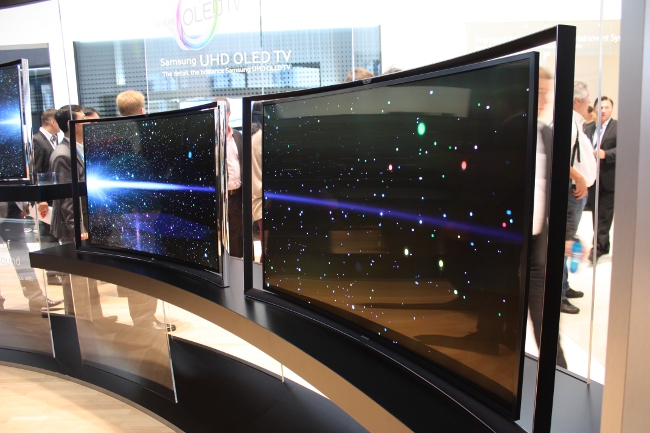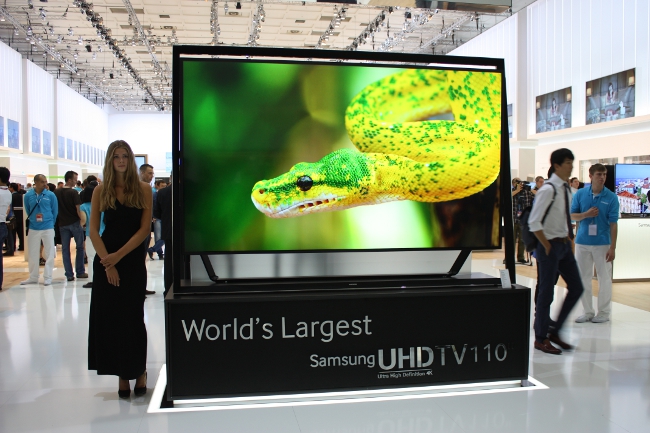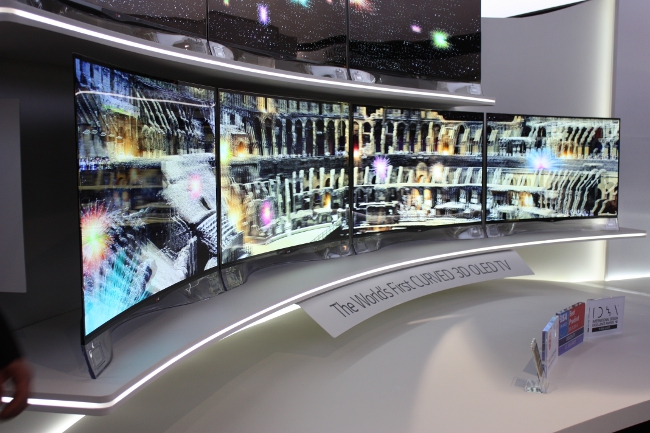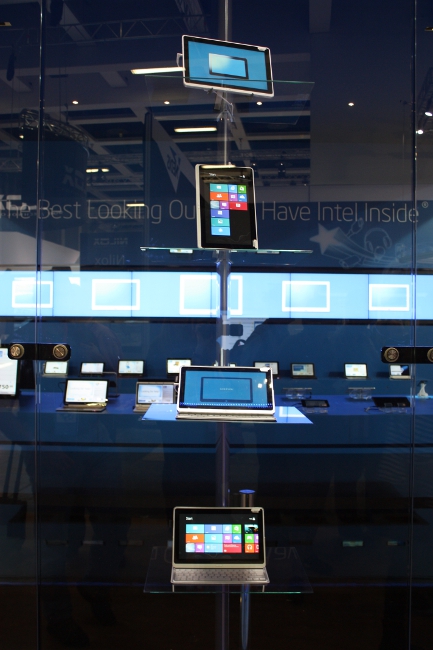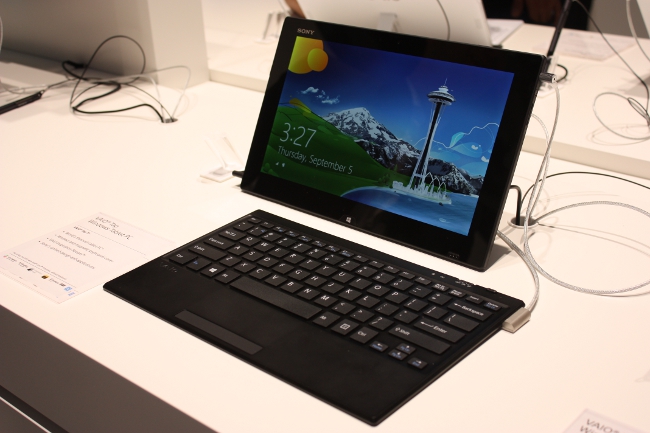IFA 2013 at Messe Berlin, Germany. Photo by Elaine Burke
IFA 2013 continues in Messe Berlin, Germany, until 11 September. After three days at the event, here’s our run-down of the key trends in tech on show at the consumer electronics expo.
Wearable tech wars
Some of the biggest news to come out of IFA focused on wearable tech devices. Samsung finally unveiled its Galaxy Gear smartwatch and Sony’s SmartWatch 2 was also on show for the public.
Unlike Samsung, Sony has been in the smartwatch game for some time now and the SmartWatch 2 is its third-generation device. Like similar devices on the market, the SmartWatch 2 is a companion device that can be quickly and easily paired with an Android smartphone using NFC.
While Galaxy Gear offers extra features like a camera built into the watch strap, these features come with an added cost and we’re expecting about €100 in the price difference between this and the SmartWatch 2, which has has an expected retail price of €179 to €199.
The Sony SmartWatch 2 in action at IFA 2013
Another point of comparison is how the two make and receive calls. Galaxy Gear has two mics and a speaker built in and requires no additional accessories, whereas the SmartWatch 2 alerts you to calls coming through on your smartphone and then connects them to a Bluetooth headset on answering, requiring a trifecta of devices for this to work. The decision-maker for consumers will be whether they want to talk to their hand or talk through a headset, it seems.
There are two points where Sony’s SmartWatch 2 beats the Galaxy Gear hands down, though. While the Galaxy Gear offers over 25 hours of power, I spoke to representatives at IFA who had been wearing and using the SmartWatch 2 for two to three days’ straight without needing to recharge. Also, Sony’s device is waterproof, allowing users to treat it more like their everyday wristwatch.
Heads up
But smartwatches aren’t the only tech you can wear, and there was much more on show at IFA. Sony had the HMZ-T3W head-mounted 3D display and the Cinemizer OLED, a 3D headset from Carl Zeiss, was also there to be tried out.
Unfortunately, getting these displays to fit just right isn’t as easy as one would like and, unless you have a perfect fit, the picture will not look right.
Sony HMZ-T3W head-mounted 3D display
More comfortable and immersive than either of these products was the Oculus Rift virtual reality headset. Trying this on for size, I was transported me to a pixelated world that threw my real-world self off-balance.
The Oculus Rift virtual reality headset
I took a trip on a medieval roller-coaster and my stomach flipped at every drop. Strolling through a virtual lakeside home my real-life legs got confused and I almost fell over. The experience was a dizzying triumph for a gadget still at the developer stage.
If we could combine these head-mounted displays with a camera and some of the augmented reality technology on show at the Intel booth, we’d certainly have something to talk about. One programme was able to split an ultrabook into the sum of its components through AR – imagine being able to do this yourself while out shopping for a new piece of kit?
The tablet in the demonstrator’s hands has been transformed into its components on the screen behind him through augmented reality
TV: is 3D over, and is 4K the future?
While headset displays were like a sideshow act at IFA, full-size screens took centre-stage. Some of the most eye-catching stands at the event involved stacks of television screens displaying bright colours, precise detail and, in some cases, ultra-high definition (UHD).
Panasonic’s wall of 4K TVs
While 3D still had a significant presence at the event and brands like LG had 3D glasses for us all to wear as we took a stroll through their hall of multi-dimensional displays, the novelty of this format appears to be wearing off and its chances of becoming mainstream wearing thin. We may be awed when presented with an array of floor-to-ceiling screens depicting an astronaut in space who almost seems to reach out and touch us, but the practicality of introducing these screens to home entertainment seems less and less likely.
The new alphanumerical buzzword is 4K, or UHD, which is four times the resolution of standard full-HD. At IFA, there were 4K TVs galore from LG, Toshiba, Panasonic, Sony and more, with Sony also announcing the opening of a 4K Ultra-HD video store for its 4K media player and the release of a 4K Handycam.
Sony 4K Media Player
This marks the beginning of the impact 4K will have on the wider market as with UHD displays comes the need for UHD content. Toshiba was also quick off the mark to meet this demand with the BDX6400KE Blu-ray player, offering near-4K upscaling.
There were also implications of 4K in ed-tech with Panasonic’s 4K tablet featuring Anoto digital writing technology vying with other interactive displays on show from TCL and Vestel.
Interactive displays from TCL (above) and Vestel at IFA 2013
Another growing trend in TV is OLED, which also comes in curved form. Both Samsung and LG had large curved OLED screens on display, and LG even had the world’s first curved OLED 3D TV. Still, nothing could compare to the biggest UHDTV from Samsung, measuring a staggering 110 inches.
Samsung’s Curved OLED TVs
A 110-inch UHDTV from Samsung
Do not adjust your set: the fuzzy picture is because this curved OLED TV from LG is a 3D display
Hope for hybrids
Finally, we had the new breed of portable computer on show at IFA. If not for tablet sales, the PC market would be floundering, but some analysts believe that new machines comprising a laptop and tablet in one could provide a boost in the final months of this year.
A wall of hybrid laptops with Intel inside
“We can now offer our customers greater flexibility in the way they consume and create content, without having to use separate devices to meet each of those needs,” said Toshiba Europe marketing director Matt McDowell, speaking of the Satellite W30t and W30Dt convertible laptops.
Standing out in this crowd of hybrid’s was Sony’s Vaio Tap series, which even comes with a stylus for added productivity. This slim Windows 8 hybrid measures under 15mm thick as a full-fledged laptop and the slate alone weighs just 780g, making it a substantial offering in terms of portability and productivity combined. Unfortunately, though, you’ll have to work fast as the compromise here is battery life, with just six hours of power coming from a full charge.
Sony Vaio Tap hybrid
As well as hybrids there were a number of portable all-in-one PCs on display, offering a family computer solution with an option for group tabletop play. Against the backdrop of these monstrous slates, research from GfK tells us that mobile tablet tastes are changing in favour of smaller devices with 7-inch displays or similar.
